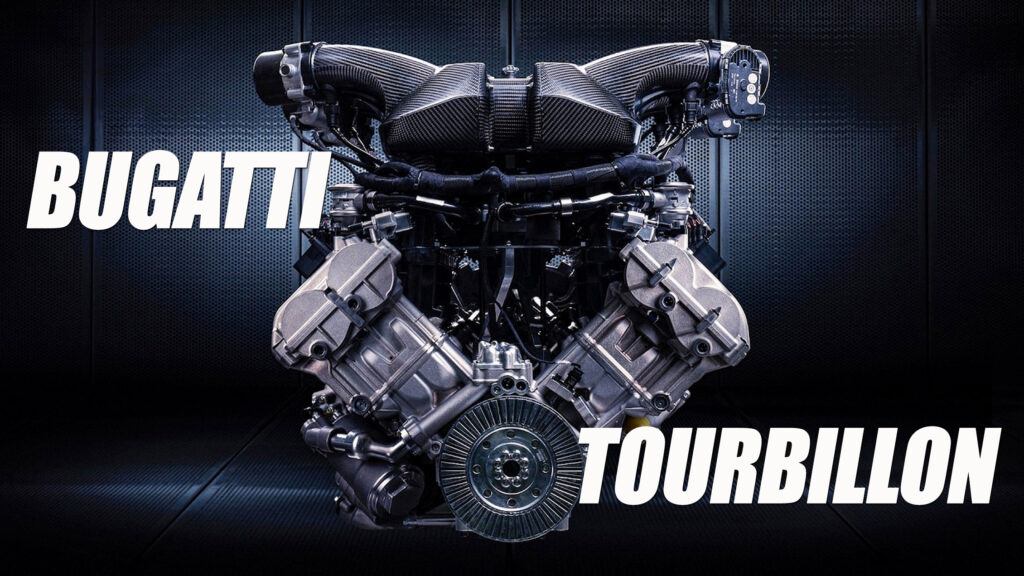- The partnership between Bugatti and Cosworth involved several possible engine designs for the Tourbillon.
- A W16 design ended up on the cutting room floor because Mate Rimac wanted a naturally aspirated engine.
- The Tourbillon could go down as the most-produced V16 in all of history.
Just about every aspect of the Bugatti Tourbillon is noteworthy. At its core though, what makes it so remarkable is the new naturally aspirated V16 that sits behind the occupants. It’s incredibly powerful, gigantic in terms of size, and wildly rare. In fact, it’s such a rare configuration for a production car that it almost ended up being an all-new W16 instead.
Mate Rimac, the new CEO of Bugatti Rimac, wanted to ensure that the successor to the Chiron had a worthy engine. That’s why he called up Cosworth, the folks behind the incredible V12 engines in the Aston Martin Valkyrie, GMA T50, and T33. It’s the same company that once built the engine in the Ford Escort Cosworth.
More: How Bugatti’s Tourbillon Name Mixed Up Google’s Internet Algorithm
In a new video from Top Gear, Bugatti and Cosworth go into detail about how this special engine was born. Bruce Wood, managing director at Cosworth, set some of the record straight. This team didn’t just tune the V16 here, they designed it from the ground up with Bugatti. “If it’s comparable, it’s not Bugatti… they have to have a thing that’s unique,” he says.
“Initially, it was to continue the W16,” he continued. Wood and Rimac worked together to gradually decide on the right engine platform. Speaking about the W16 he says “it’s not a nice architecture for a high speed normally aspirated engine… we said from the very beginning ‘let’s do a V16’ because Mate was very clear from the beginning he didn’t want turbocharging.”
Why avoid the turbos? They cut down on the experience and a Bugatti is meant to be exactly that from both inside and outside of the vehicle. Removing the turbos allows Bugatti owners to enjoy the additional noise from the intake and exhaust of this massive engine. There’s more to it than simply the experience though. “At the end, the most effective, the most lightweight, with that level of performance, definitely is the V16 90-degrees,” says Dario Benazzi, head of drivetrain at Bugatti Rimac.
Interestingly, while V16s have existed for decades, they’ve not been incredibly successful as production cars. Cord, Maserati, Alfa Romeo, and Auto Union all employed them during the 1930s for racing. Cadillac famously did one in a production car for the first time in 1930. Still, the last production version was in the Cizeta Moroder V16T. As Top Gear points out, the company only made 13 of them. That means that the Tourbillon is very like going to be the most-produced V16 car ever.




